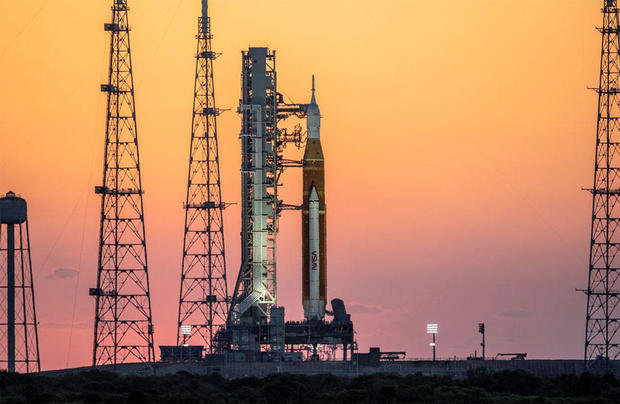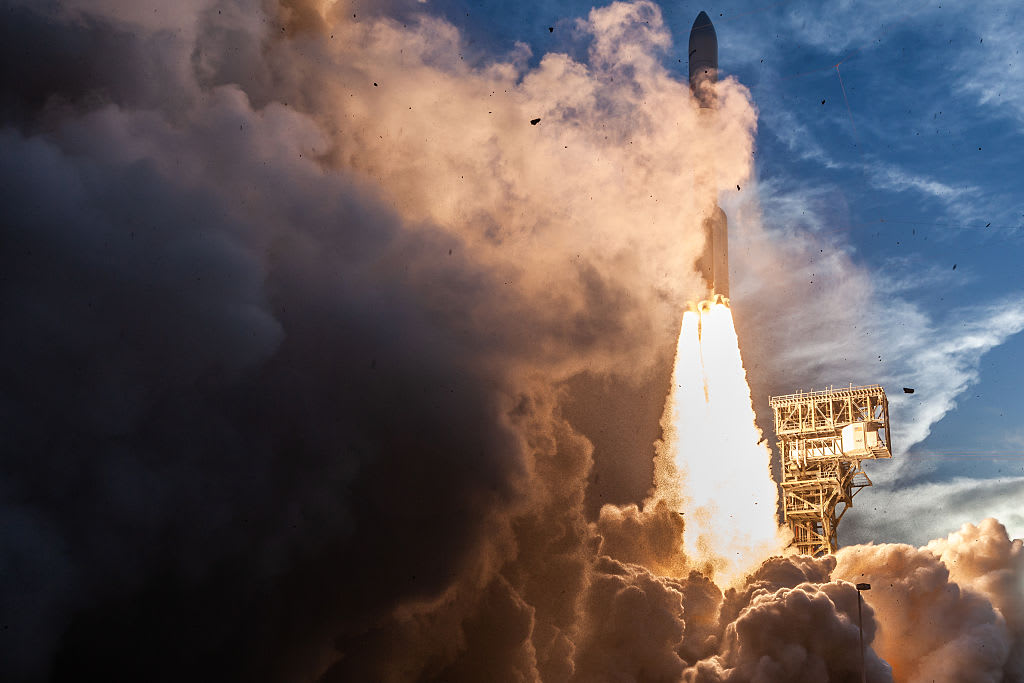Biden's 2023 budget request gives boost to NASA's Artemis moon program
The Biden administration is requesting $26 billion for NASA in its fiscal 2023 budget — a $2.7 billion increase over the enacted 2021 budget — and includes $7.5 billion for the Artemis moon program, a $1.1 billion boost the agency says will help keep the project on track for a lunar landing as early as 2025.
Another $1.5 billion would go development of new Human Landing System moon landers procured through competition following three initial Artemis landings using SpaceX vehicles, one unpiloted and two carrying astronauts.
The budget request includes $1.042 billion for International Space Station operations, acknowledging a mission extension through 2030, and $1.642 billion for commercial crew spacecraft built by SpaceX and Boeing and the unpiloted SpaceX Dragon and Northrop Grumman cargo ships that deliver supplies and equipment.
The request also includes $2.4 billion for Earth System Observatory satellites to learn more about the impacts of climate change and $480 million for development of a robotic moon rover to investigate presumed ice deposits in permanently shadowed craters near the moon's south pole.
Ice, if it is accessible, might one day provide a source of rocket propellant, air and water, reducing the cost and complexity of deep space exploration.
Farther afield, the budget includes $822 million for continued development of a Mars sample return mission, an ambitious robotic flight to bring martian rock and soil samples back to Earth; $482 million for work on the Nancy Grace Roman Space Telescope; and $184 million for a new spacecraft to study the immediate aftermath of the big bang.
The president's $26 billion request "is a significant increase over last year's budget," said NASA Administrator Bill Nelson. "In fact, it's 8 percent more than the enacted federal spending levels. It's the largest request for science in NASA history.
"But greater than any number or statistic or fact is what this budget request represents. It's a signal of support of our missions in a new era of exploration and discovery. ... It's going to help our nation, it's going to help the world. It's going to address climate change. And it underscores STEM education."
But like all budget requests, its ultimate fate is up to Congress. Thanks to an impasse over the fiscal 2022 budget, the federal government currently is funded through stop-gap spending measures called continuing resolutions that effectively freeze spending at previously approved levels.
Margaret Schaus, NASA's chief financial officer, warned that another yearlong budget impasse would mark a major setback for the civilian space agency.
"NASA's priorities are ambitious: addressing the global climate crisis, landing the first woman and person of color on the moon, exploring the farthest reaches of our universe and advancing sustainable U.S. aviation — just to name a few," she wrote.
"It's critical that Congress come to a bipartisan, bicameral agreement on FY22 funding. A full-year continuing resolution would (leave) the agency without the funding needed to achieve our important goals on behalf of the nation."
The budget rollout comes at an especially busy time for NASA.
The agency's first super-heavy-lift Space Launch System Artemis moon rocket was rolled out to pad 39B at the Kennedy Space Center March 18 for a dress rehearsal countdown and fueling test April 1-3 to clear the way for a maiden flight in early June to propel an unpiloted Orion crew capsule beyond the moon and back.
The first crewed flight is planned for mid 2024 with the first piloted landing on the lunar surface sometime in 2025. The 2023 budget request includes $750 million for exploration system upgrades, including a new mobile launch gantry to support an even larger, more powerful version of the SLS needed for follow-on flights.
In the meantime astronaut Mark Vande Hei, launched to the International Space Station last April 9 aboard a Russian Soyuz spacecraft, returns to Earth Wednesday with a landing in Kazakhstan to close out a 355-day stay in space, the longest single flight by an American.
At the same time, NASA and Houston-based Axiom Space are gearing up to launch the first four private astronauts on a commercial flight to the International Space Station aboard a SpaceX Crew Dragon capsule. Launch from pad 39A at the Kennedy Space Center is targeted for April. 6, just after the SLS countdown rehearsal on nearby pad 39B.
The next launch of professional astronauts to the ISS, also aboard a Crew Dragon, is targeted for around April 19. That will be followed by the return to Earth, around the end of April, of the four astronauts the new crew is replacing.
And then the stage will be set for the long-awaited Artemis 1 launch.
"Soon, we're going back to the moon as Artemis," Nelson said. "We're going to learn to live and work in a hostile environment, and then it's on to Mars in the late 2030s. President Biden's $26 billion proposed budget for NASA will begin to make this happen."







